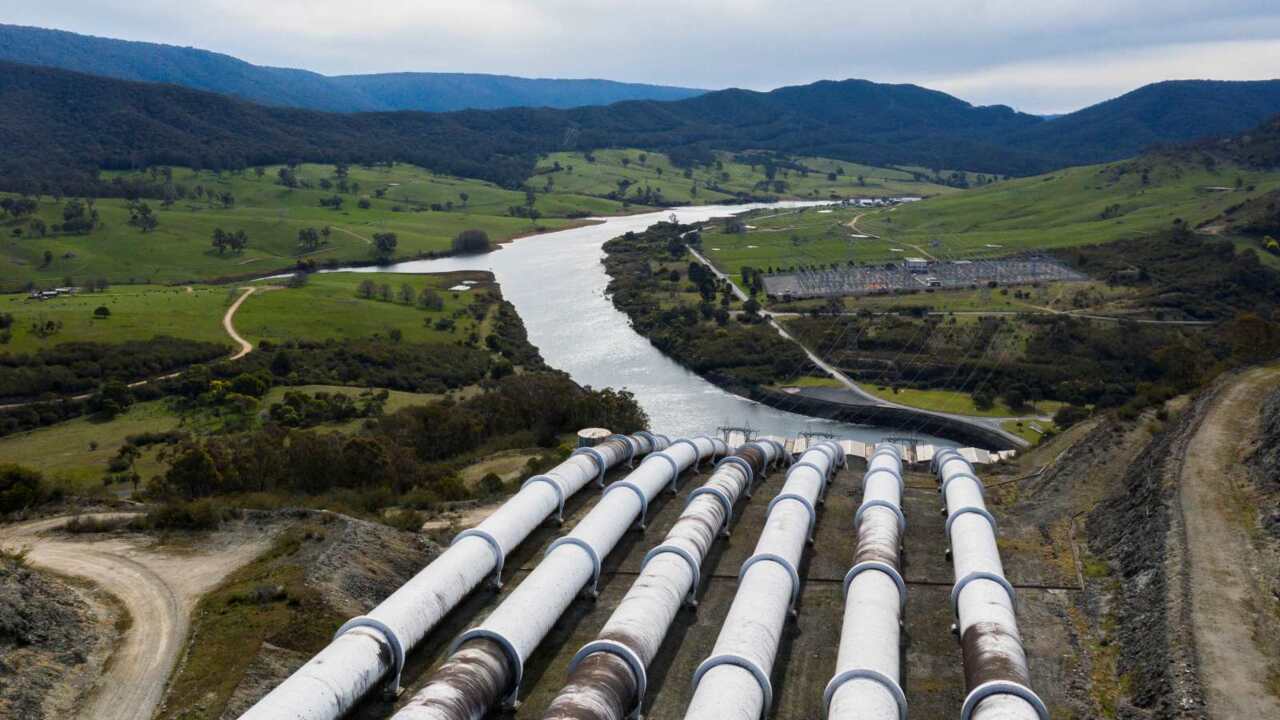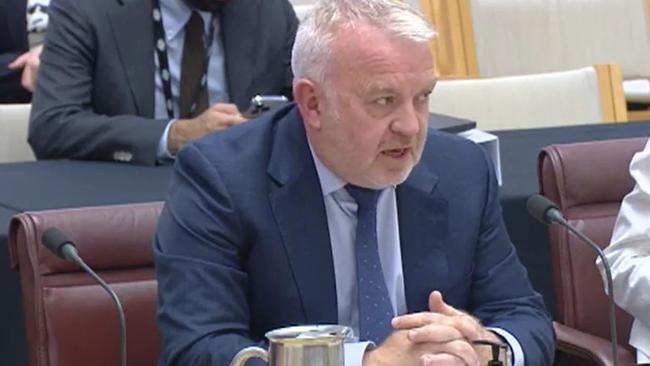Drilling work at Snowy Hydro set to resume as NSW readies approval
Australia’s biggest renewable energy project will soon resume drilling as the NSW government prepares to issue final environmental approvals to Snowy Hydro.

Australia’s biggest renewable energy project will soon resume drilling as the NSW government prepares to issue final environmental approvals to Snowy Hydro, a boost to the $12bn project that is critical for the country’s transition away from coal but has been beset by delays and cost blowouts.
The federal government-owned Snowy 2.0 project has suffered a series of problems this year including the giant tunnel boring machine, known as Florence, getting stuck underground after becoming bogged in soft ground, forcing work to stop.
However, in a boost to the prospects of the project, Florence is poised to resume drilling again.
The NSW Department of Planning and Environment is set to permit Snowy Hydro to begin drilling a 17km tunnel that will link a future underground power station to Tantangara Dam in the Kosciuszko National Park.
The restart for Florence, one of three complex boring machines, will temper concerns about potential further delays to a project that was initially scheduled to be online by 2024 but is now expected to be operational in 2027.
Restarting Florence requires approval from the NSW government for a modification of its environmental impact approvals, which The Australian understands will be given this week.
Snowy Hydro, the NSW government and representatives of federal Energy Minister Chris Bowen did not immediately respond to requests for comment.
The Albanese government will be desperately hoping to avoid any new technical woes and that the project, which will provide a critical backstop to the rapid deployment of solar and wind generation, can meet its 2027 timetable.
While the approval would allow Snowy to resume drilling – expected to take some three years to complete – progress was expected to remain slow but steady, sources told The Australian.
Florence has so far tunnelled less than 200m, and Snowy chief executive Dennis Barnes earlier last month warned that the project was expected to face technically challenging conditions.
“Florence is going to hit what we know to be naturally occurring asbestos about 7km into its journey,” Mr Barnes told Senate estimates in October.

Mr Barnes said Snowy staff had anticipated that Florence would face challenging soft earth conditions.
The Snowy chief told The Australian earlier this year that the company had undertaken substantial preparation works to understand the geology of the tunnel, but accepted there remained a risk that Florence could face new difficulties.
Australia has set an ambitious target of having renewable energy generate more than 80 per cent of the country’s electricity by the end of the decade, a target that has intensified social and economic pressure on coal power stations – still the dominant source of Australia’s electricity.
Some two-thirds of Australia’s coal power stations are set to close within the next decade as they reach the end of their technical lifespans and struggle to financially compete against renewables.
But the country is struggling to develop sufficient zero emission generation quickly enough, prompting warnings from the Australian Energy Market Operator that urgent work is needed to guarantee reliable sources of electricity over the next decade. In a bid to accelerate work, Mr Bowen last week said the federal government would underwrite some 32 gigawatts of new renewable energy generation and batteries over the next six years.
Developing batteries is a particular concern to Australian authorities.
Without pumped hydro or batteries, Australia’s National Electricity Market – which excludes Western Australia and the Northern Territory – will be exposed to shortfalls in generation capacity when the sun is not shining or the wind is not blowing, increasing power bills.
Batteries are a possible solution, but they do not have the scale of Snowy Hydro 2.0, which is so large that once complete it will be able to provide enough electricity to run large swathes of the grid on its own for about a week.
Australia cannot easily build alternative pumped hydro projects, with few sites available and even fewer with the scale of Snowy Hydro, heightening the country’s reliance on the mega-project meeting its 2027 timetable.
By 2027, two of Australia’s largest coal power stations – Origin Energy’s Eraring and EnergyAustralia’s Yallourn – are set to be retired, increasing the need for Snowy Hydro.
As Australia depends on Snowy Hydro 2.0, the federal Labor government can ill afford any further cost blowouts that will prompt criticism of the management of the project.
The budget for Snowy Hydro 2.0 has grown from its initial $2bn estimates, but Mr Barnes has said the revised contract with developer WeBuild limited the exposure of taxpayers for any new delays.






To join the conversation, please log in. Don't have an account? Register
Join the conversation, you are commenting as Logout